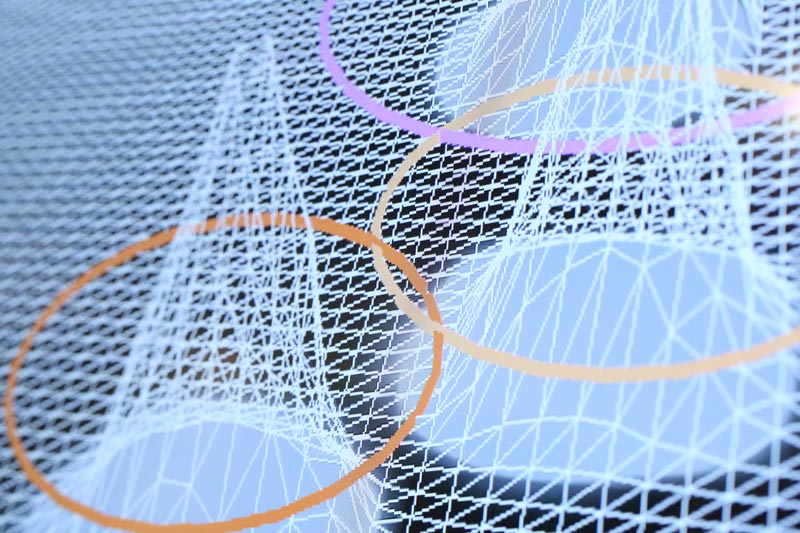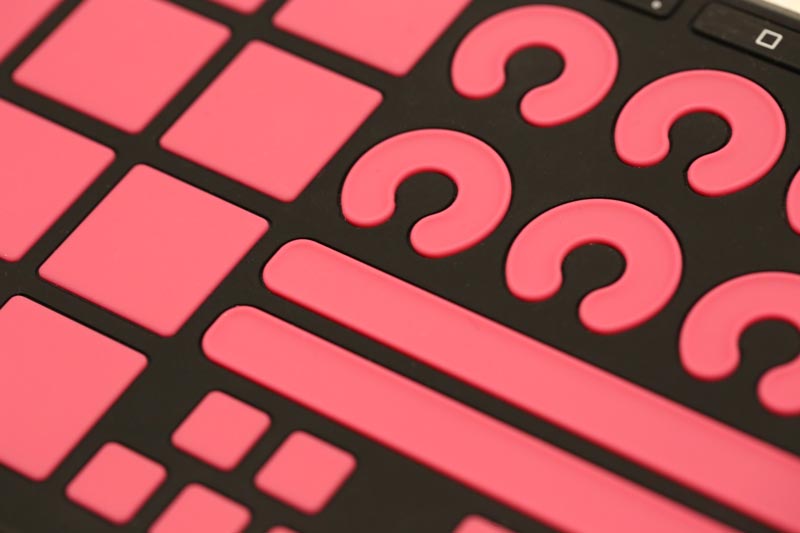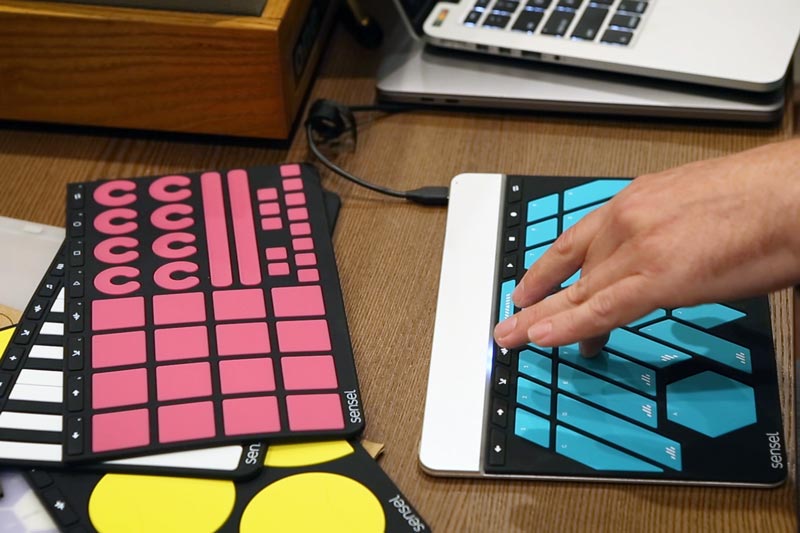The Sensel Morph is a multitouch surface optimized for use in artistic applications: using state-of-the-art sensor technology, it provides musicians, visual artists, video editors, and even gamers an incredible number of ways to interface with their computers—or with the other hardware that makes their art possible.
Peter Nyboer from Sensel recently visited Perfect Circuit to talk through some of the seemingly infinite number of ways that the Morph can find its way into musicians' workflows. Check out the video above to hear Peter's thoughts about what makes the Morph so unique and rewarding.
 Raw multitouch data from the Sensel Morph generating visuals in Jitter
Raw multitouch data from the Sensel Morph generating visuals in Jitter
World-Class Sensor Technology
It's worth taking a second to talk about the raw technology that makes the Morph work. The Morph touch surface is a 230 x 130mm area fewer than 8mm thick. Within that area are 20,000 pressure sensors capable of detecting force in a range from 5g to 5kg—in other words, it has a ton of super sensitive force sensors inside. The Morph translates the readings from each of these individual sensors into logical groups, creating a multitouch surface with uncommonly high resolution both in terms of X & Y position as well as pressure detection.
It's a bit difficult to express in writing just how exciting all of that is—but once your hands are on it, it's abundantly clear just how powerful a tool the Morph is. The combination of the absurdly high resolution and well-scaled pressure sensitivity imbues the Morph with a ton of raw power, which alone is enough to spark creative ideas.
A quick note: the Morph is usable in this state alone! Advanced users can parse serial data directly, get deep into the weeds with the Morph's open-ended API, or use the dedicated Max/MSP [sensel] object to gain direct multitouch access (as Peter does in the demo video above). But some of the Morph's magic lies, of course, in its ability to change its behavior based on the user's selection of swappable overlays.
 Close-up view of Sensel's Music Production Overlay
Close-up view of Sensel's Music Production Overlay
Morphing with Overlays
Sensel produces a wide range of silicone overlays that you can attach to the Morph's surface, changing its behavior to suit your immediate need. These overlays secure magnetically, and the Morph instantaneously adapts to behave appropriately for the selected overlay.
Need a keyboard? Grab the Piano overlay and play a quick melody. Need drum pads and DAW controls? Toss on the Music Production overlay and quickly lay down a drum track. Need to type up a quick E-mail? Grab the Tactile Keyboard overlay for QWERTY-style input (yes, it truly turns the Morph into a QWERTY keyboard). Or, if you want to design your own touch interface, you can use the Innovator's overlay, which allows users to define their own UI configurations from scratch. It is quick, easy, and affordable to adapt the Morph into the controller that you need at a moment's notice.
 Peter from Sensel playing the Morph with a Buchla Thunder overlay
Peter from Sensel playing the Morph with a Buchla Thunder overlay
Perhaps the coolest Morph overlay is the Buchla Thunder—a keyboard-like layout created in collaboration with Buchla USA. The original Thunder, a powerful MIDI controller, was built in 1989 by Don Buchla and "Lynx" Crowe (with a manual written by Keith McMillen). The Thunder provided extensive control, using ergonomically-arranged touchplates to detect velocity, pseudo-pressure, touch location, and more. This layout was later used in Buchla's 222e/223e Kinesthetic Input Port modules, and is now available in a more affordable form than ever before. The Morph seems at home as part of that legacy: while it does not offer all of the features of the original Thunder, it provides a stellar playing experience and tremendous flexibility.
One important thing that was not obvious to me at first is that the Morph's overlays can be set up to produce any number of data types at the same time. Using the Sensel App, users can customize the response of their overlays to a pretty absurd degree: each element on an overlay can produce MIDI data, ASCII keystrokes, macro key commands, gaming HID data, and more. Within those categories, even further options are available: MIDI UI areas can act as "keys," CC sliders, knobs, buttons or toggles, or even MPE pads that produce note, velocity, X, Y, and pressure CCs all at once. You could use some pads to play MIDI notes while others just send CCs, and yet others produce keyboard shortcut commands, and another acts as a clickable mouse/trackpad—the options are endless, and it is dead simple to create a highly personalized experience with a little bit of time.
The sheer quality of its build and its truly remarkable touch response would have been enough to convince me that the Morph is worth using—but the selection of overlays and number of options for user customization make this a controller that you can truly grow into over time. I am still tweaking my personal Morph layout day by day, but along the way I have found an enormous number of opportunities for expression that have been difficult to reach with other controllers.
Morph is MPE-capable right out of the box, making it a prime choice for use with the growing number of MPE software and hardware like Bitwig Studio and the Black Corporation Kijimi or Deckard's Dream (with use of an appropriate MIDI-USB Host between). It is a stellar controller for open-ended computer music environments like Max, Pure Data, or Supercollider, and integrates seamlessly with any given DAW. And, with the help of a sufficiently sophisticated MIDI–CV module (such as the Expert Sleepers FH-2 or Endorphin.es Shuttle Control), you can even use the Morph to directly control a modular synthesizer.
It would not be possible in the course of a short article to discuss all of the things you could do with a Morph; the possibilities are staggering. There are a lot of similar controllers out there—but there is nothing else that does everything that the Morph does.







